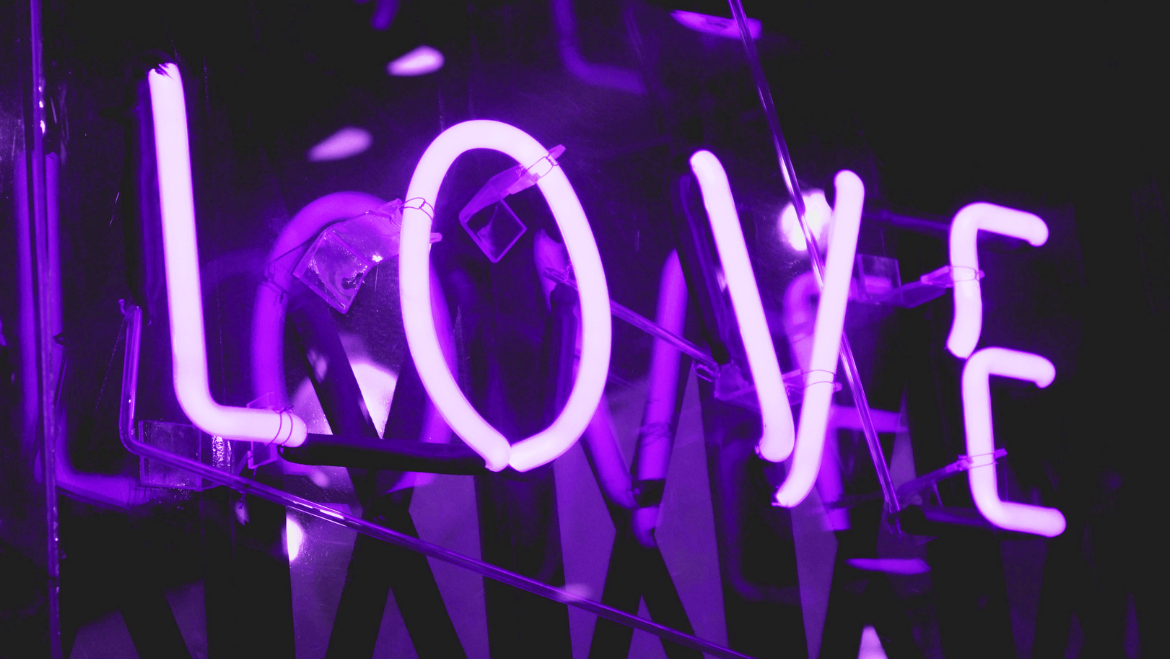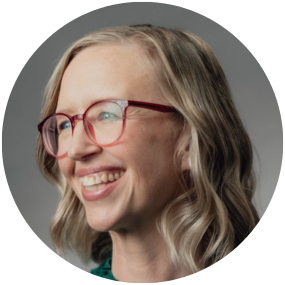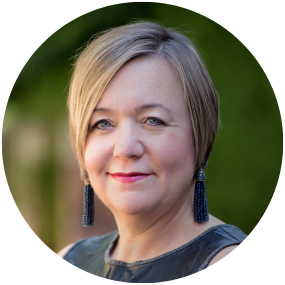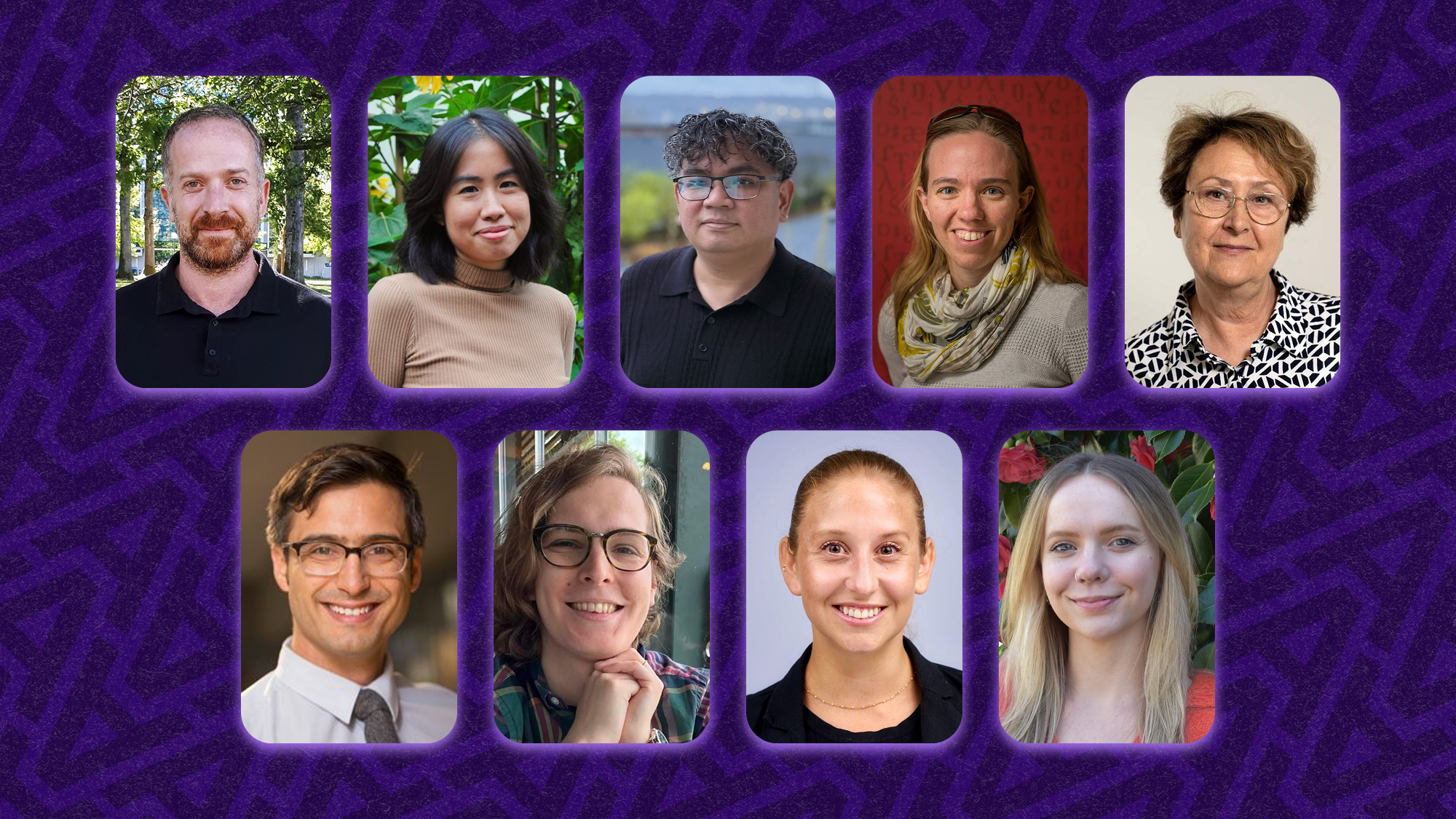

As Valentine’s Day approaches, we ponder the definition of love and its many facets that can be experienced and interpreted differently. We offer a glimpse of what love might look like through the lens of Arts faculty members.
Love encompasses many emotions and experiences, and everyone may have a different interpretation. We reached out to experts to help us define and illustrate this complex concept and emotion.


Mandy Catron
Lecturer in the School of Creative Writing
Mandy is a renowned author, famous for her book How to Fall in Love with Anyone: A Memoir in Essays. The book was shortlisted for the 2018 RCB Taylor Prize and the Kobo Emerging Writer Award. Her essays and talks have been translated into over thirty languages.
Can you share insights about your latest takeaways about love? What are you working on that you’re excited about?
I’ve been working with TED to create a course on love and relationships called How to Flip the Script on Love based on the research I did for my book and other articles I’ve written. The goal is to help people think about the narratives we receive about love and how they shape our assumptions and experiences. It tackles everything from popular culture to our families of origin to the metaphors that are embedded in our language. I recently wrote “Non-monogamous relationships seem to be on the rise. Is that surprising?” for The Guardian about the limitations of traditional institutions, such as marriage and the nuclear family.
How do you think our cultural narratives around love impact the way we approach relationships?
In North America long-term monogamous romantic commitment is considered the most important form of love, but this cultural narrative hasn’t quite caught up to how we actually practice and experience love. For example, the institution of marriage is still widely seen as the most legitimate and meaningful expression of love, despite the fact that marriage rates have been steadily declining for decades. North American culture says that long-term monogamous romantic commitment is our most important form of love.
When I think about the love that shapes my life, I think of my partner and kids, but also of long-distance friendships, daycare workers, neighbours, and any number of intimacies we don’t have names for. I think we all benefit from broadening our sense of what love can look like and where we might find it.
“Life can feel much richer when we expand our sense of what love is—and what kinds of loving relationships are meaningful and worth celebrating.”
What implications does this research have for promoting healthier attitudes toward oneself within the context of relationships?
If you really examine some of the cultural messages we receive about love and relationships, you start to notice how incredibly disempowering they are. Even the phrase “to fall in love” suggests that love is something that happens to us without our control or consent. If instead, you begin with the belief that love is something we each get to offer one another—and something we might be offered in return—then all these interesting questions arise: How do I show this person that they matter to me? How do I want to feel when we’re together? How do I want them to feel? What kinds of actions don’t look or feel like offers of love? Suddenly, we have more agency, and we’re less susceptible to abusive or unhealthy relationship dynamics.


Dr. Christine Evans
Assistant Professor at the Department of Theater & Film
Dr. Evans specializes in pedagogic research that aims to combine film theory, psychoanalysis, and ideological approaches with evidence-based teaching practices in film and media studies. Her research in the field of film studies primarily focuses on film theory, Lacanian psychoanalysis, and the work of Slavoj Žižek.
How does cinema and theater influence the way people see love and romance? What stories or films would you recommend for reflection?
Cinema—and particularly Hollywood—is often criticized for being “unrealistic” in its depictions, by which people mean that it glosses over things or romanticizes behaviours. Fair enough, but I think the one topic that no art form has ever misrepresented is love. Love is exactly as it appears in the movies: crazy, thrilling, horrifying, perfect, and unbearably painful. Our experience of love can no longer be extricated from cinema.
When you’re in love and someone loves you too, you walk down the street and feel like you’re in a giddy montage sequence with the camera swirling around you and music swelling on the soundtrack. That ecstatic feeling is purely cinematic, and so is the total despair we feel when we lose love. My personal favourite movies about love are Jonathan Glazer’s Birth (2004) and David Lynch’s Mulholland Drive (2001).
What does current research tell us about the diverse forms and expressions of love?
An interesting recent trend in cinema, particularly children’s cinema, is emphasizing alternatives to romantic love. In Frozen (2013), the true love that saves the day isn’t romantic love but sisterly love. The lesson of many films these days seems to be that some ‘better’ loves (for family, for self) are more permanent and trustworthy than other ‘lesser’ loves (for romantic partners). I’ve talked to many parents who have admitted that they find this new trend relieving, and although I can see why, I feel like it’s an avoidance that’ll cost us, psychically speaking, down the line.
Part of what makes love so magical, frightening, wonderful, and awful (all at once) is that it requires a choice: I love you, at the expense of everyone and everything else. The other’s radical, irreconcilable, and terrifying alterity is central to love as a notion, which is one reason why we’ve never stopped making art about it. Romantic love and its representation teach us how to deal with that, so it says something interesting about us that, in this era of seemingly increasing acceptance, we’re entertaining so many fantasies of love without otherness.
What implications does this research have for promoting healthier attitudes toward oneself within the context of relationships?
Philosopher Maurice Blanchot, who valued his friendship with Georges Bataille so much that he wrote a whole book about it, has a beautiful quote about love in friendship that I think is great to keep in mind when considering any kind of love. He writes that friends “reserve, even on the most familiar terms, an infinite distance, the fundamental separation on the basis of which what separates becomes relation… It is the interval, the pure interval that, from me to this other who is a friend, measures all that is between us.” This is a nice reminder that not knowing everything about someone (which is always impossible, but particularly in friendship where one does not have filial ties, sexual desire, or religious attachments to fill in the gaps of this knowledge) has an intimacy and a closeness all its own. We shouldn’t rush to seal up the spaces between ourselves and others but should cherish them as the very basis of relativity.
“I think we would all do well to remember that difference, not sameness, is what keeps love alive – even when it’s a love or appreciation for our own internal contradictions.”


Dr. Marina Adshade
Assistant Professor at School of Economics
Dr. Adshade is a renowned expert on the economics of sex and love. Her bestselling book, Dollars and Sex: How Economic Influences Sex and Love, has received widespread acclaim, and she has also published over 80 feature articles in various publications around the globe.
In your opinion, how can economics contribute to a better understanding of relationships and human behaviour in the context of love?
The search for romantic relationships occurs in markets that function much like other economic markets. The advantage of adopting this market perspective is that it allows us to explore changes in other aspects of the economy—technology, economic opportunities, and housing markets—and ask ourselves, how are these impacting the way individuals form their romantic relationships?
Economists are particularly well-equipped to understand how these relationships are evolving over time and among different socio-economic groups, which has important implications for public policy and social welfare. This relationship gap has significant implications not just for individuals but also for society as a whole.
“This is probably more crucial today than ever before, as growing economic inequality is contributing to a widening gap between those who can find lasting romantic relationships and those who cannot.”
How does love contribute to our overall well-being and happiness?
There is increasing evidence that social connection is incredibly important not only for happiness but also for mental and physical health. Of course, it is possible to have strong social connections outside of a romantic relationship, and, in fact, being in a relationship doesn’t guarantee that a person won’t feel lonely. However, it does appear that people who are in loving relationships are both happier and healthier than others.
Currently, this is the area of research that interests me the most; as more and more people find themselves alone, what are the implications for happiness and well-being? What should governments be doing to address the growing sense of isolation? And not just governments; I believe there are implications for universities as well, as more students find themselves feeling alone and fewer find themselves in loving relationships.
Where do you think the future of loving relationships is headed?
We have seen remarkable changes in how people choose their relationships over time, and I think changes in the economy are largely contributing to those choices. Historically, particularly when men significantly outearn women and when families needed someone to work full-time in the home, the concept of a ‘traditional marriage’ made economic sense. Now, the gap in wages between men and women is narrowing and technological innovations are replacing much of the work previously done by women.
Today, individuals can ask themselves: What do I need from my relationship(s) in order to be happy? With more and more people choosing non-traditional approaches to intimate relationships, society is becoming more tolerant of alternative arrangements.
“These economic changes have contributed to greater acceptance of same-sex relationships, for example, and I believe we will see more evolution in the future as couples are liberated to choose their own relationship approach.”


Dr. Carrie Jenkins
Professor at the Department of Philosophy
Dr. Jenkins is an accomplished public philosopher who focuses on the intersection of philosophy and creative arts. Her interests lie in the philosophy of love, poetry, and fiction. Her work has been shortlisted and has won several awards, including being selected as a poet for Art Song Lab and being chosen as a Wall Scholar.
With Valentine’s around the corner, what should people reflect on in terms of what love could look like outside of romantic love?
When we think about romantic love, our thinking is shaped by certain scripts and certain normative images of what that is meant to look like. Those are particularly prevalent around Valentine’s Day in advertising, in media, and in the stories we tell to one another about our own and each other’s lives. I think it’s important for us to take a moment to notice what those stories are saying, but even more importantly to notice that they are stories. I would encourage everyone to take Valentine’s Day as a prompt to think about the role that those stories play in structuring our lives.
For example, we are conditioned to put romantic love on a pedestal, as the most important or exciting or life-changing thing a person can ever experience. However, one of its consequences is the devaluation of every other kind of loving relationship that we might experience: our bonds with family and with our closest friends for example. Another consequence is that it telegraphs to people who prefer to be single that they are missing out or making some kind of mistake for not centering romantic love in their lives.
Now, whatever you think about that kind of love story, what’s important is that it is only one kind of love story and there are many others. We keep telling this one story, and promoting it to occupy a central place in our ideas of “the good life.”
What are the key findings on non-traditional relationships like open relationships or polyamory, and how are these findings challenging societal norms?
Research indicates that social recognition and support is important for a relationship to thrive, and socially stigmatized relationships–polyamorous or queer relationships—do not receive the same levels of recognition and support as normative relationships do. The way we stigmatize something comes back to the kinds of stories we tell. The stigmatization of unconventional relationships makes the success stories harder to hear: people don’t necessarily broadcast their situation when they’re still in it, because they (very reasonably) fear judgment. But if things go wrong and they exit the relationship, they might then be much more ready to share a sad story that fits within the conventional norms.
“The love stories we tell and the stories we consume—real-life stories and fictional media—those stories are how we socially construct what romantic love is.”
How does love contribute to our overall well-being and happiness?
In my recent book, Sad Love, I take care to distinguish between happiness and something else, which I call eudaimonia. ‘Eudaimonia’ is an ancient Greek word which literally means “good-spiritedness.” I argue that this is best understood in terms of meaningfulness, interconnectedness, and creativity, which are all distinct from the emotional state of happiness. Now love—not just romantic love, but any kind of love—is a crucial aspect of eudaimonia, in my opinion. But in contemporary ways of thinking and talking, it’s happiness that is closely connected to love, and especially to romantic love.
I’d encourage people to think about how their relationships (romantic or otherwise) contribute to their sense of their lives as meaningful.


